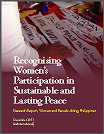Yellow satellite dishes have been protruding from the windows and roofs of homes and establishments in Bangkok these past few months. Through these, Thais are able to witness political events as they unfold, in a way that is unprecedented in Thai media.
Yellow is also the colour swarming the manicured government complex which used to be the seat of two embattled prime ministers who were forced to set up makeshift command centres inside a spartan military compound. Mobilisations around the government compound are likewise unprecedented. It is by far the longest running and probably the most consumerist protest in Thai politics.
Yellow may be the colour of change and beginning. But old issues continue to crop up despite the colour’s prominence in the cityscape. Behind both the satellite dishes and protests is a tycoon who used to be a friend of former Thai PM Thaksin Shinawatra and now a foe of Thaksin’s legacy.
Sondhi Limthongkul, leader of the Peoples Alliance for Democracy (PAD) began his career as a journalist and publisher and much later, a telecommunications magnate. Dubbed as the “Asian Rupert Murdoch,” Sondhi was among the strongest supporters of Thaksin until the he fell out of favour and declared bankruptcy. As he almost lost his business interests, Sondhi became the head of the anti-government movement, which was successful in bringing down leaders associated with Thaksin, including former PM Samak Sundarejev.
With him as its owner, the satellite television ASTV has been producing a blow by blow coverage of the protests. As ASTV satellite television is not regulated by the government, it has been a venue for free and unadulterated speeches against the government which is now headed by Thaksin’s brother-in-law.
But just how innovative is the ASTV? How much of the freedom enjoyed by media is being transformed into opportunities for social change?
Albeit ASTV is a welcome development, some are wary of the quality and impact of its programmes in the areas of media practices and policy. As media activist Supinya Klangnarong explained, “We may have a free speech television but it promotes hatred. Despite this, we cannot censor it.”
Klangnarong who is now the vice-chair of the Centre for Popular Media Reform (CPMR), was slapped with libel case and indemnity demand of 400 million Bhat (US $ 10 million) by Thaksin’s Shin corporation. The Thai Post published her article that traced the astronomical growth of Shin Corporation to the Thaksin's Thai Rak Thai party. After three years, the complaint against her was dismissed by the court.
Although an advocate of media freedom herself, Klangnarong is unsure about the freedom that even state media is relishing these days: “The media has more freedom. Most of it has positioned itself as anti-government. However, it seems to have forgotten the Red side and the fact that the Yellow side has become the power holder.”
Red has been the colour of the People Power Party (PPP) which constitutes the majority in Thai Parliament and is associated with Thaksin. Because of its media machinery and its elite hierarchy, PAD has managed to sustain the protests for months now, keeping good food flowing, among others. “The government has been losing strength to exercise its powers. The people at the rally mostly belong to the middle class, which has greater flexibility to exercise their political rights,” Klangnarong shared.
The same mob is also critical of the current electoral system which counts the majority of the populace. Despite the 2007 coup and the ouster of Thaksin, many rural communities are still loyal to the deposed PM and his party. But most of these communities also constitute the current silent majority. “The country side is busy with their survival. Their political involvement is limited to the elections. The anti-Thaksin sentiment s not that strong even in the South,” she said. Thaksin loyalists are concentrated in Northern Thailand. Meanwhile, Southern Thailand used to be the centre of insurgency as well as extra judicial killings during Thaksin's term
There are also private economic interests at stake with the rally which has since claimed the lives of two protesters. The rally at the government complex is what keeps the public tuned in to ASTV and consequently, ASTV's financial sustainability. Since May, ASTV sold 200,000 satellite dishes in Bangkok alone. Klangnarong added that a chunk of the station's revenues have come from donations and advertisements. “After the protests, we cannot see a bright future for ASTV,” she pointed out.
Doubts about a bright future in politics are likewise prevalent. Ordinary people and political analysts are projecting either an election or a coup. “I am quite pessimistic about the future. The conflict has reached a point where it would never reach an end. People are living in anxiety. Issues of ethnic minorities and marginalised peoples have been ignored,” Klangnarong remarked.
Sources:
Interview with Supinya Klangnarong. (15 October 2008).
British Broadcasting Corporation. (2008). “Bangkok protest leaders surrender.” URL: http://news.bbc.co.uk/2/hi/asia-pacific/7662548.stm
Macan-Markar, Marwaan. (2008). “Media-Thailand: Satellite TV Boosts Anti-Gov't Protests.” URL: http://wwww.ipsnews.net/news.asp?idnews=43798
The Nation. (2008). PAD Protest Coverage: Chalerm bans ASTV from cable channels.” URL: http://www.nationmultimedia.com/2008/ 06/14/politics/politics_30075496.php





 The
The 
 Isis Resource Center holds one of the largest feminist collections of materials in the Global South. With 40 years of publication experience, Isis holds a vast collection.
Isis Resource Center holds one of the largest feminist collections of materials in the Global South. With 40 years of publication experience, Isis holds a vast collection.